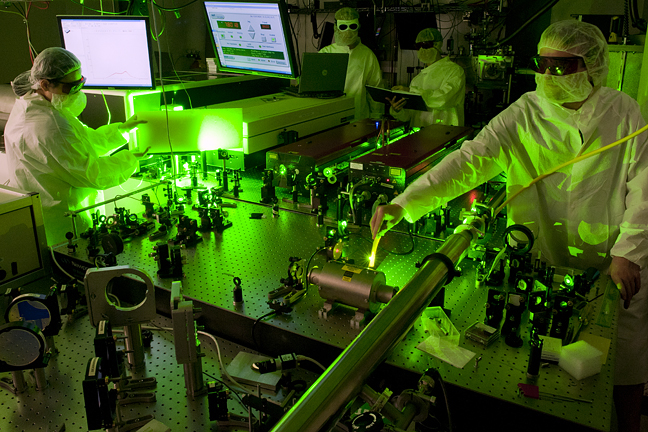Resources
Resources
Another Institution Joins Nationwide High-intensity Laser Network
Oct 30, 2018. News

Scarlet Laser Facility
Source: Ohio State University
By Chris Booker
The Ohio State University announced that it is part of a new research network called LaserNetUS.
The U.S. Department of Energy is backing the new network with $6.8 million in funding over the next two years to help restore the United States’ once-dominant position in high-intensity laser research. The department’s Fusion Energy Sciences program (FES) within the Office of Science is supporting the network that includes institutions nationwide operating high-intensity, ultrafast lasers.
Ohio State’s Scarlet Laser Facility, co-directed by Department of Physics professors Douglass Schumacher and Linn Van Woerkom, will receive $1 million to fund its part of the network.
“This is an exciting opportunity. High-intensity lasers generate extreme states of matter like those found near supernova explosions or in the earth’s interior and they have a broad range of applications in manufacturing and medicine,” Schumacher says.
“Best of all, this will connect our students with some of the most talented scientists in the country as they come here to do their research.”
LaserNetUS will provide U.S. scientists increased access to the unique high-intensity laser facilities at nine institutions: Ohio State, Colorado State University, University of Michigan, University of Nebraska-Lincoln, University of Texas at Austin, University of Rochester, and the SLAC, Lawrence Berkeley, and Lawrence Livermore national laboratories.
The network includes the most powerful lasers in the U.S., including those with powers approaching or exceeding a petawatt. Petawatt lasers generate light with at least a million billion watts of power, or nearly 100 times the output of all the world’s power plants — but only in the briefest of bursts.
High-intensity lasers can generate particles for high-energy physics research or intense X-ray pulses to probe matter as it evolves on ultrafast time scales.
They are also promising in many potential technological areas such as for generating intense neutron bursts, which could evaluate aging aircraft components, precisely cut materials or potentially deliver tightly focused radiation therapy to cancer tumors.
The U.S. was the dominant innovator and user of high-intensity laser technology in the 1990s, but now Europe and Asia have taken the lead, according to a recent report from the National Academies of Sciences, Engineering and Medicine.
Currently, 80 to 90 percent of the world’s high-intensity ultrafast laser systems are overseas, and all of the highest power research lasers currently in construction or already built are also overseas.
LaserNetUS follows the recommendation by the report’s authors to establish a national network of laser facilities to emulate successful efforts in Europe.
LaserNetUS will hold a nationwide call for proposals for access to the network’s facilities. The proposals will be peer reviewed by an independent proposal review panel. This call will allow any researcher in the U.S. to get time on one of the high-intensity lasers at the LaserNetUS host institutions.
More From News